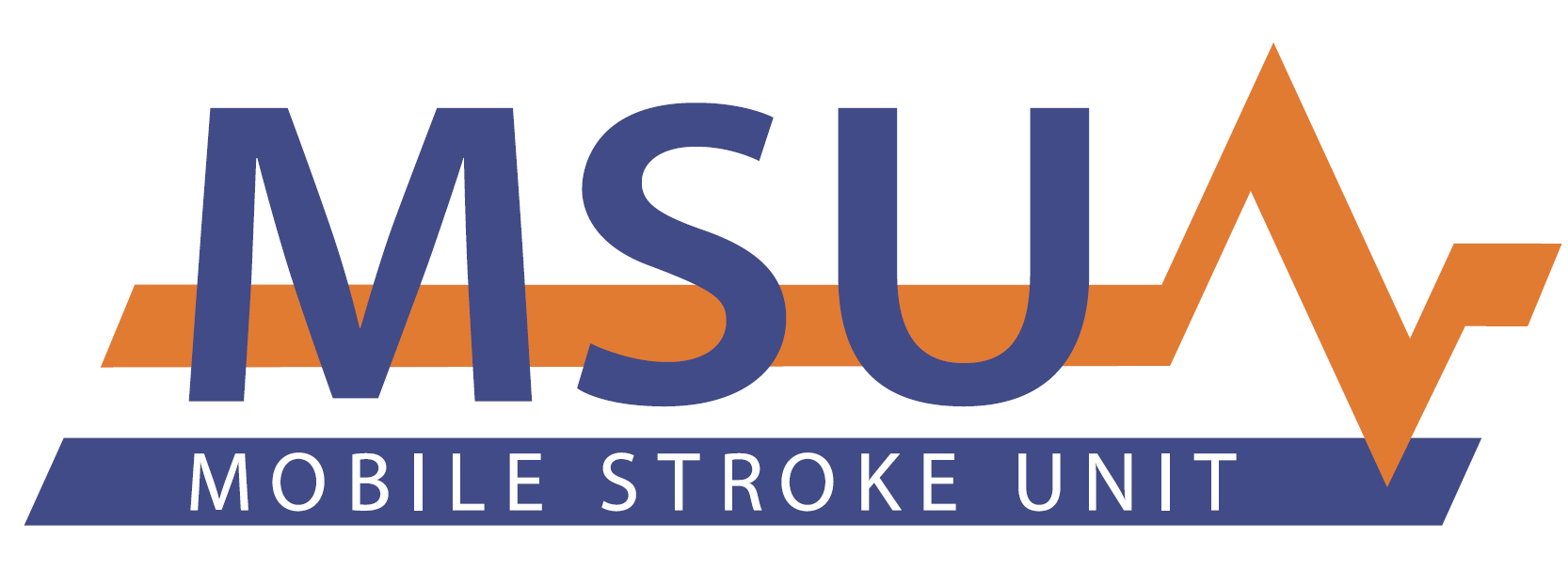Stroke is the most frequent cause of permanent disability in adults and one of the most frequent causes of death. In Germany, there are approximately 262 000 new cases of stroke each year. The adverse consequences of this age dependent disease will, due to the demographic changes in most countries, further increase in the future.
Treating Stroke: Time is Brain
Stroke: a frequent cause of chronic disability and death
Stroke is treatable
Fortunately, stroke can be treated. Importantly, most treatments are highly time dependent. Two important approaches of therapy are thrombolysis and mechanical recanalisation.
• Thrombolysis:
In most cases (85%), the stroke is caused by a thrombus (blood clot) which blocks the flow of blood in brain-supplying vessels. This is known as Ischaemic Stroke (IS). In many of these cases, the thrombus can be in part dissolved with thrombolytic treatment (tissue plasminogen activator) which is administered intravenously. However, in 15% of strokes, the cause is the rupture of a blood vessel and the extravasation of blood. These types of stroke are known as Haemorrhagic Stroke (HS). In this situation, administration of thrombolysis would be harmful to the patient, increasing the haemorrhaging of blood. Unfortunately, it is difficult to distinguish ischaemic stroke from haemorrhagic stroke by clinical symptoms alone. For the exclusion of haemorrhage as the cause of stroke, imaging by computer tomography (CT) is necessary.
• Mechanical recanalization:
In 15-20% of cases, the ischaemic stroke is caused by the obstruction of a large vessel supplying the brain. For these Large Vessel Occlusions (LVOs), restoration of blood flow is better accomplished through the use of mechanical recanalisation. Mechanical recanalisation, or thrombectomy, involves the removal of the thrombus using a catheter. In order to identify patients with LVO, visualisation of the cerebral vasculature by CT-Angiography is necessary.
Treatment usually comes too late or not at all
Stroke is one of the most time-sensitive diseases. More than any other tissue, brain cells (neurons) are highly sensitive to oxygen deprivation. In an untreated stroke, approximately 2 million neurons die each minute. As a result, “time is brain” is a defining mantra of acute stroke care. Unfortunately, in many countries, delays in transport, diagnosis and therapy adversely affect patients. In such settings, the prehospital phase is long (often more than an hour), the time between hospital arrival to thrombolysis is often longer (more than 30-60 minutes), and the delay for mechanical recanalization is even longer. As a result, most patients present to the clinician too late for treatment. Consequently, thrombolysis rates are less than 10 % and rates of mechanical recanalization are less than 1-2% in most countries.
Moreover, is the issue of availability of mechanical recanalisation. Mechanical recanalisation requires specialised equipment and highly trained interventionalists. As a result, it is often not available at all stroke-treating hospitals (primary stroke centres), instead being limited to large centres with interventional neuroradiology (comprehensive stroke centres). Therefore, patients with a large vessel occlusion have to be secondarily transferred from the primary (or receiving) thrombectomy non-capable hospital (PSC) to a centre which is capable of performing thrombectomy (CSC). This secondary transfer is often delayed, with the patient arriving at the CSC hours later, often too late for effective treatment.




